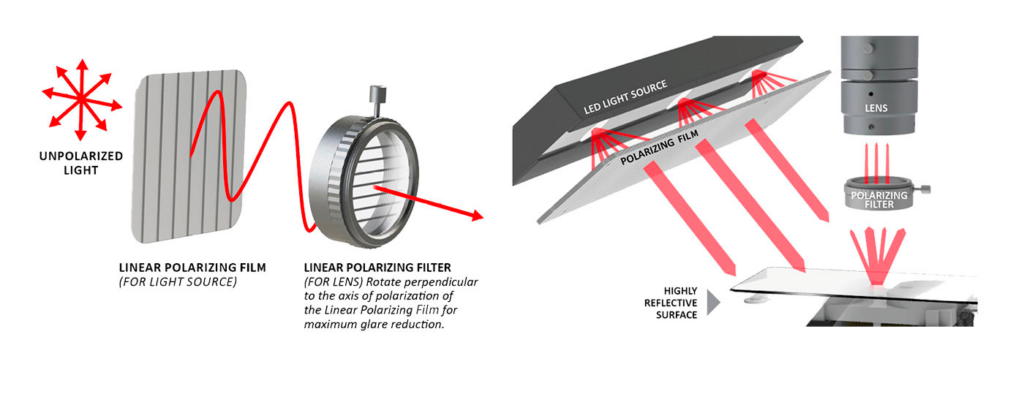Correct Lighting Setup
Quality, glare free lighting is critical to a successful AI deployment and one of the key reasons an AI solution may to customers expectations. Follow this guide to find out whats important for our solution and some of the common pitfalls.
Ripple free LED lights
Rapta uses only high quality LED illumination sources with pure DC power supplies to ensure there is no electrical noise or AC 50Hz/60Hz that causes light flicker visible to the camera. Many low cost LED lamps that run directly on AC power contain a huge amount of electrical ripple due to their design. This leads to LED flicker or “zebra” lines visible to the camera that can interfere with the accuracy of any industrial AI models performance. Pure DC ensures that the LED light is smooth, clean and provides the best conditions for our AI system to perform.

Minimum Lux Level
Ensure your work surface has a minimum of 1,500 lux – 2,000 lux measured by an accurate lux meter. This is important as the human eye is not able to objectively gauge brightness and is not a good judge to determine whether the work surface is adequately lit for an AI system to function well. The lux level should be confirmed at the same height as the assembly and as close to the assembly part as possible. The following example will show you how to measure the lux level to verify you have sufficient illumination for our AI system.

Color temperature
We recommend an LED color temperature of 4000K which is in the range of natural to neutral light. Our AI model is trained on a variety of color temperatures to ensure it will operate in real world conditions where your manufacturing process may contain a combination of fluorescent, metal halide, LED or natural light. The LED lights supplied with the AI Supercoach are designed to be the dominant light source to ensure the best performance of the camera and AI system.

Glare
Reflected light from highly reflective or shiny surfaces can interfere with the performance on an AI system. There are a couple of solutions for glare depending upon your assembly parts and manufacturing environment requirements:
- Light position relative to the camera can mitigate glare in some cases. Try positioning your lights so that they are not directly reflecting from the assembly part or fixture back to the camera. If this is not practical see the next solution.
- Linear and circular polarizers offer an effective solution to this challenge by polarizing the LED light source on a different plane to the camera lens so that glare does not present in the images captured by the camera. We find a linear polarizer on the LED light source and a circular polarizer on the camera lens offers the best performance in many applications. Contact the Rapta support team to find out if you may require glare mitigation in your application.

